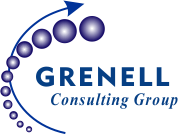The growing yet controversial trend of gamifying the workplace to immediately acknowledge and reward employee behavior is, quite frankly, disturbing. The idea is that the use of gaming strategies in employee engagement can influence behavior and motivation. Let’s say you have just won a new sales account. You have now racked up enough points to be in the 1,000-point sales club. On your computer screen, gold coins are flowing from a slot machine (ka-ching-ka-ching) and your avatar is jumping up and down (whoo-hee)!
More and more economists have been coming out of the research closet to say, money is not the key motivator of most employees. Behavioral economist Dan Ariely famously tested the motivating power of Wall Street bonuses. Especially for cognitive tasks, he discovered that money is not the great motivator. So what does motivate employees?
To keep employees engaged and satisfied in a job, you need to intrinsically motivate them. But ask your managers how they create intrinsic motivation and the concept becomes fuzzy. Driving behavior by tapping into employee values, interests and enjoyment for a task is very different from dangling money. Although we can define intrinsic motivation, we do not seem to know how to create it.
It is no coincidence that those who have been able to tell us how to create intrinsic motivation have become the most popular management gurus of our time.
Search inside yourself –Google’s 80/20 rule, allowing employees to spend 20 percent of their time on their own projects, is only part of the secret to the search giant’s ability to unleash creativity and innovation in the workforce. Google has a Jolly Good Fellow(yes, that is his title) named Chade-Meng Tan helping each employee create self-awareness and emotional intelligence. Meng teaches self-awareness and self-mastery. When employees open their hearts and become more empathetic and compassionate, they have the capacity to “forge highly productive collaborations based on trust and transparent communication,” says Meng.
Build self-mastery – Daniel Pink has famously said that the ‘do this and you will get that’ approach does not work. The author of Drive: The Surprising Truth About What Motivates Us says self-efficacy is the key to motivation. Whether getting As in French class or becoming the best sales person, education and self-mastery helps to build self-efficacy. But if you want to motivate or persuade others, you need to be focused on how to make the other person great. Here, the best tools are empathy and relationship building that leads to a deeper perspective of an individual’s core drivers.
Stimulate passion – One primal instinct that had been overlooked was social impact, until CK Prahalad revolutionized business with the social entrepreneurship movement. As the growing interest in social entrepreneurism shows, many of us want to make a positive difference through our work. Employees benefit with higher focus and engagement when companies allow employees to follow their intellectual curiosity and those things they are passionate about. The key is to find a synergistic intersection between what the employee is passionate about and what can benefit the company.
All in all, when we are motivated to be nicer people we perform better. Then, it only follows that we should expect our fellow man to want to be nicer, too.
But instead, we underestimate the values of others. We tend to consider our colleagues to be extrinsically motivated but ourselves to be intrinsically motivated, observes Dr. David Facer in the July 2012 issue of Training magazine. Negative attitudes toward colleagues get picked up in subtle and not-so-subtle ways. If you view your colleagues as money-seeking opportunists, you are less apt to foster cooperation in the workplace.
By opening our hearts, as Meng advises, we will be better able to see the better half of our colleagues and create true collaboration in the workplace. Farmville is not the way to a more productive workplace after all.
We are working with a relatively large privately-owned company that while sales-focused and consistently profitable, has been creating a culture of “passionate engagement” for and with their employees. With a crisp focus on vision, mission and core values, consistently discussed and reinforced, conversations are frequent about what really motivates employees. This company gets that link between employee’s emotional engagement in the company’s purpose and their own intrinsic purpose.
Numerous studies have pointed out the discrepancies between the views of employees versus managers/executives. Managers consistently rank money as the top motivator while employees rank the “soft” stuff as critical. Those things that are harder to quantify, such as good management, communication, work that matters, recognizing effort, career path opportunities continue to be the key motivators.
